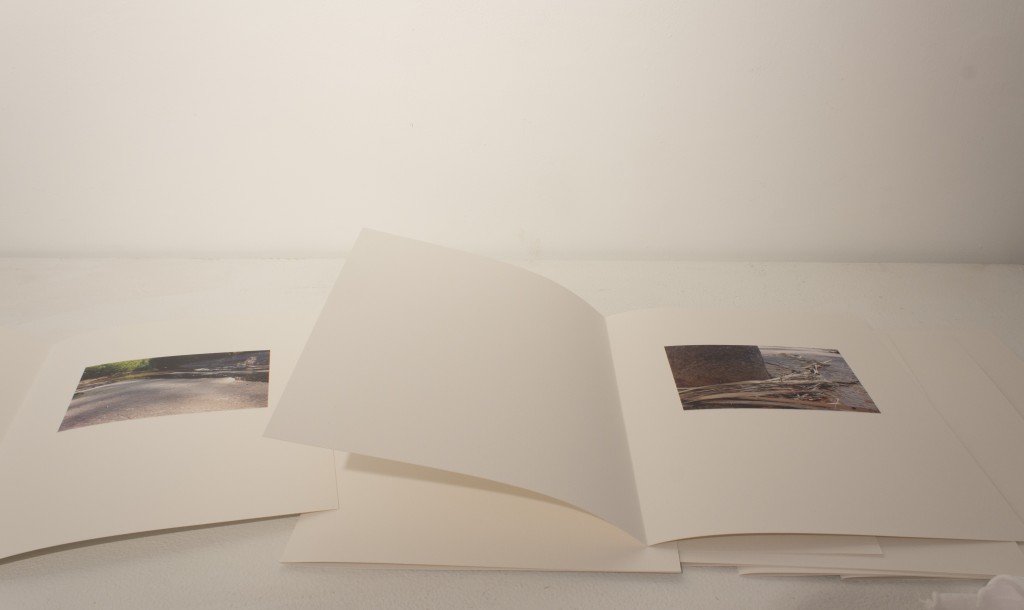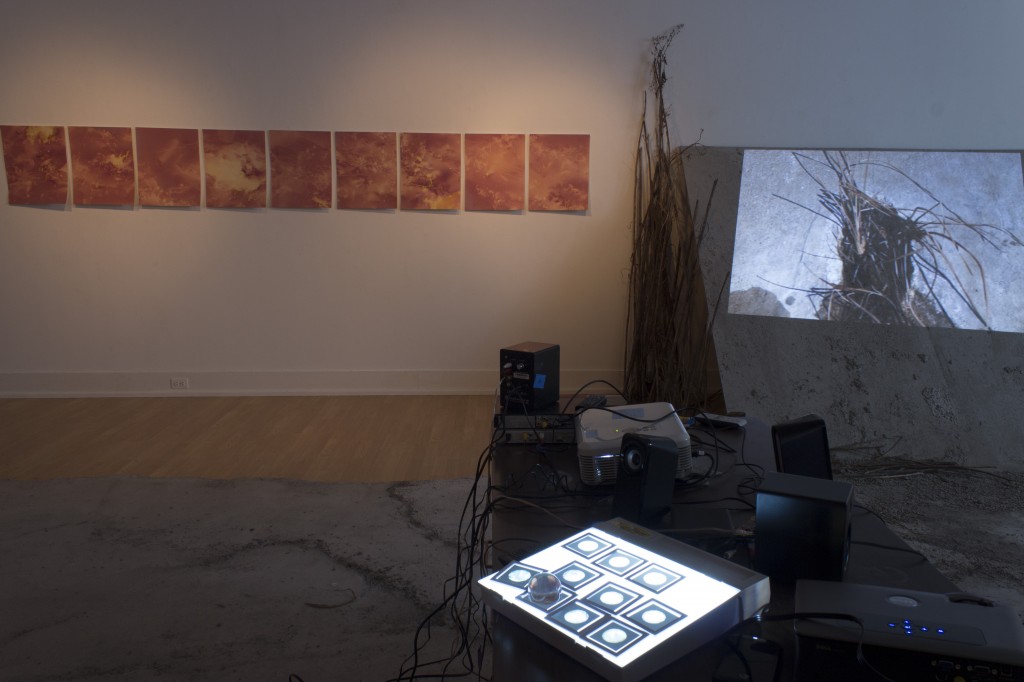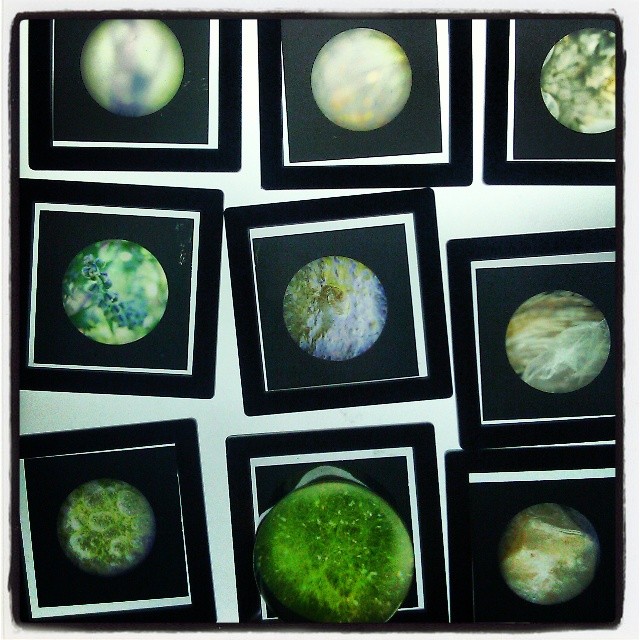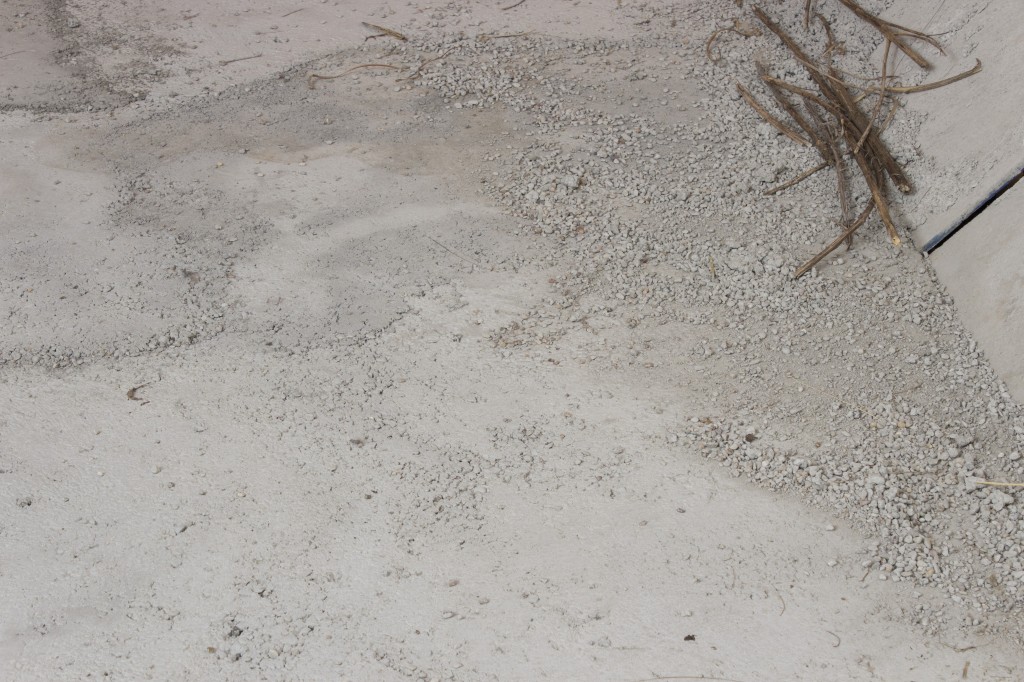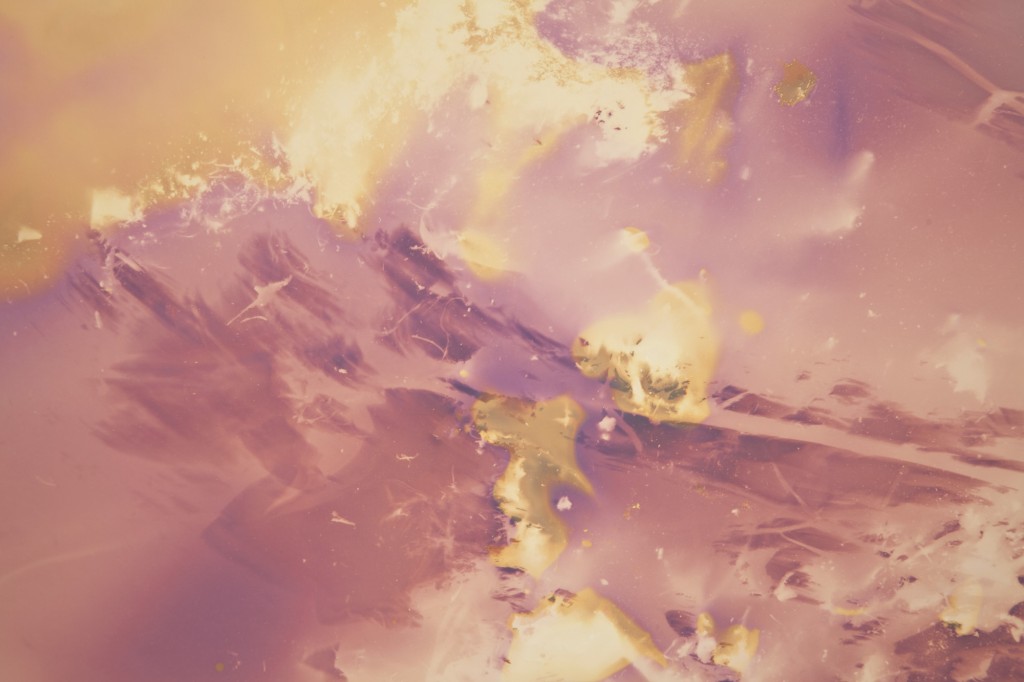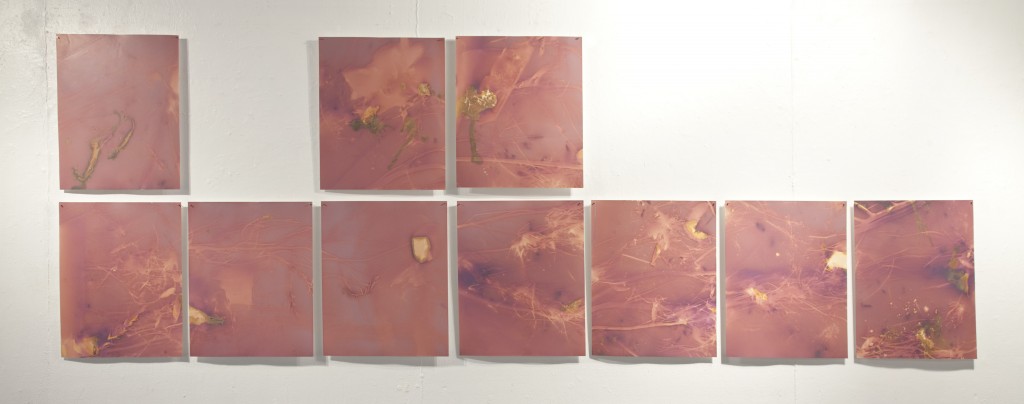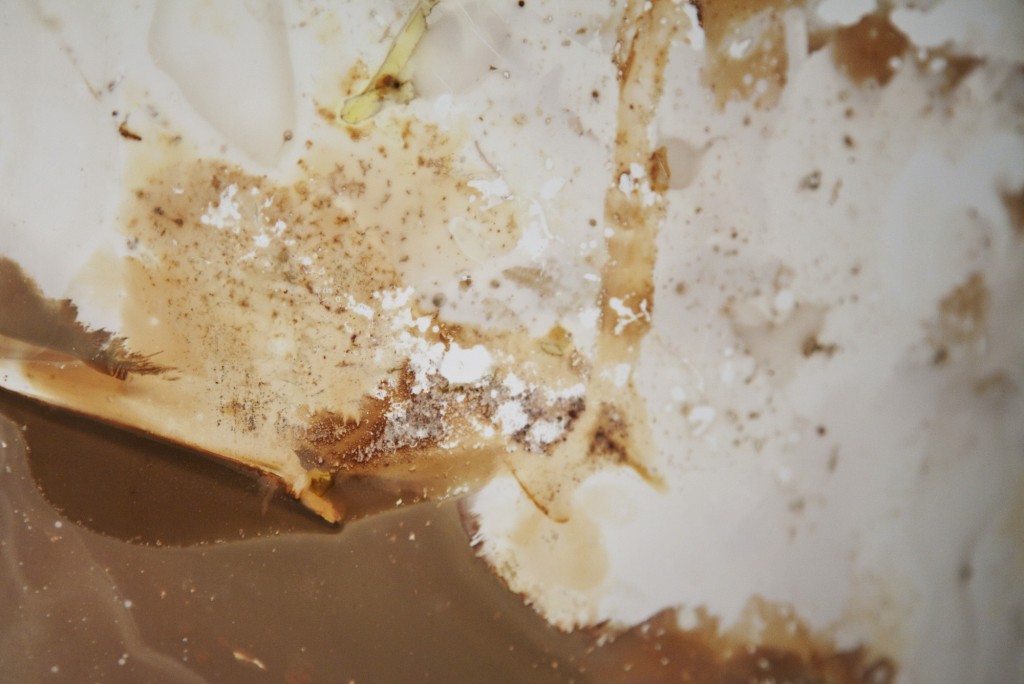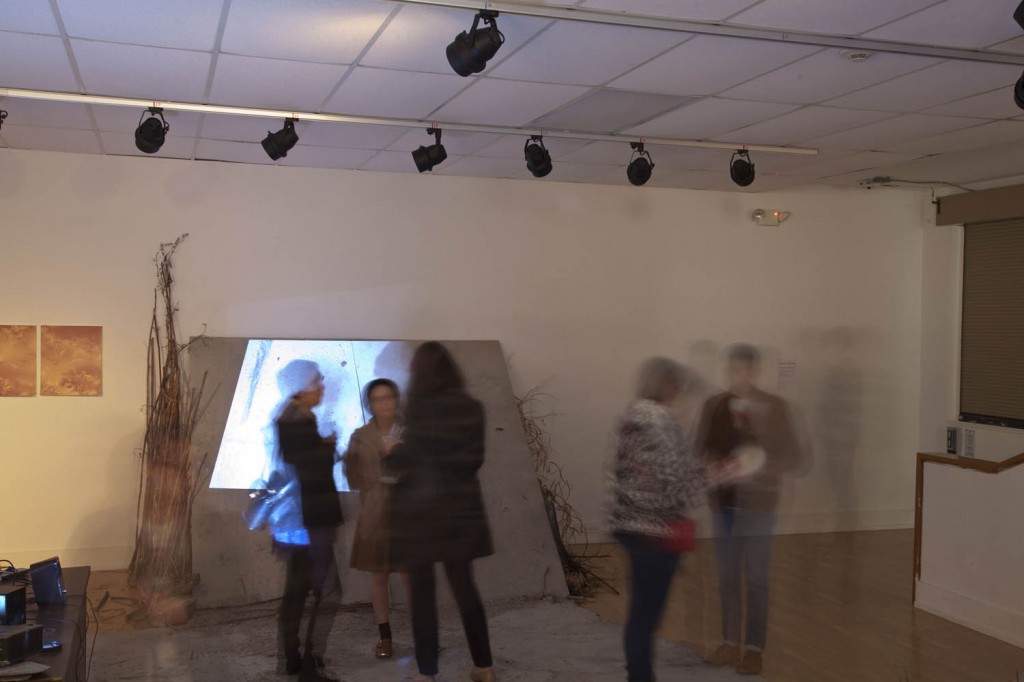
33.053444 N, -96.991328 W is an installation exploring lost, disavowed space. The coordinate points refer to a section of a suburban creek in an area of transition from a waterway that has been canalized and maintained by city infrastructure to a meandering, open flow. At this junction, due to the sharp distinction between what is maintained and what is wild, the riparian buffer zone along the creek serves as a filter for stormwater runoff and detritus. This space exists in a composite state consisting of the natural environment in combination with the relics and dregs of human consumption.
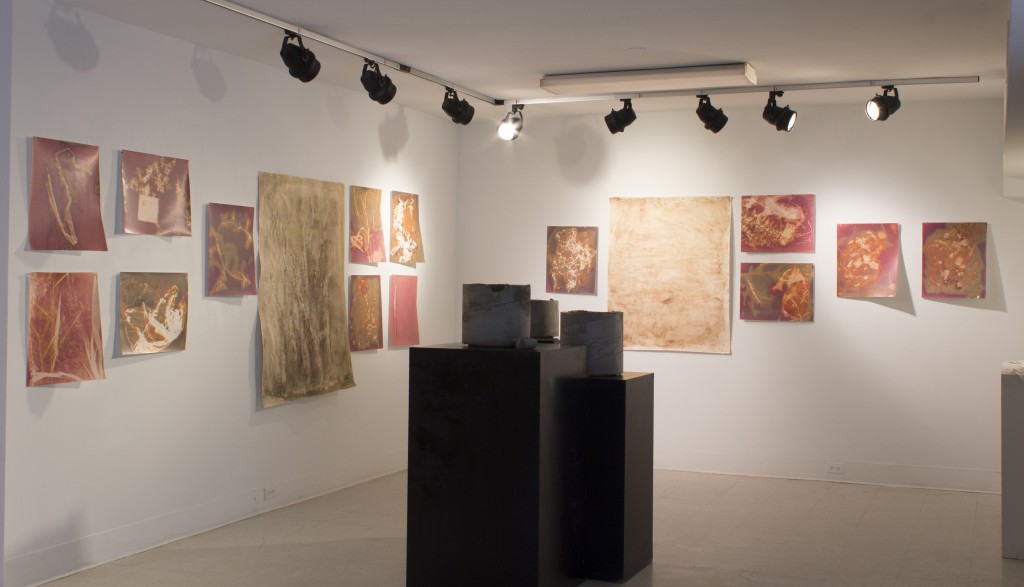
The Cora Stafford Gallery, where this installation took place, is a split-level gallery space, which naturally led to a divided installation. The viewing experience is bisected between a Specimen Room and a Laboratory Space. The Specimen Room, in the upper level of the gallery, encompasses the viewer in object-prints, samples of the creek-space recorded onto light sensitive photographic paper which now serve as unique specimen in their own right. These pieces line the walls free of frames, hanging lightly, “pinned” to the wall in reference to entomological specimen. Though photographs, these pieces are not intended to be understood in the traditional terms of a photograph, as a transparent window to be looked through, but should instead be considered as significant three-dimensional objects. These object-prints are typically 16 x 20 inches in size and are accompanied by two larger 30 x 40 inch anthotype prints, as well as two other specimen pieces: a table of folios and three concrete models.
This body of work presents a richly textured photographic index of this blended landscape through the blending of inorganic and organic forms. Acknowledging my own role of observer as a lens through which this place may be experienced, 33.053444 N, -96.991328 W explores the contemporary hybrid landscape through scientific allusion while examining both possibilities and limits within the medium of photography.
This installation specifically takes the form of an experiential space to highlight the perspective of the viewer as a physical being- we understand through sensory experiences, and these experiences inform our intellect. Such experiential knowledge leads to the understanding and processing, also known as interpretation. This is significant in contemporary art, as we should no longer presume that any work can be fully appreciated or understood through a single sense.
33.053444 N, -96.991328 W is in conversation with the work of previous photographic and land artists who have built a site-specific frame that established a simultaneously critical and sincere perspective through which a local environmental and photographic circumstance can be examined. Utilizing two-dimensional and three-dimensional visual objects, reflective and transmissive light, the reverberation of sounds, and the envelopment of an environment, this installation employs physical manifestations and mediations that acknowledge our presence in the creation of a photograph and provide a forum for contemplation and discussion.
